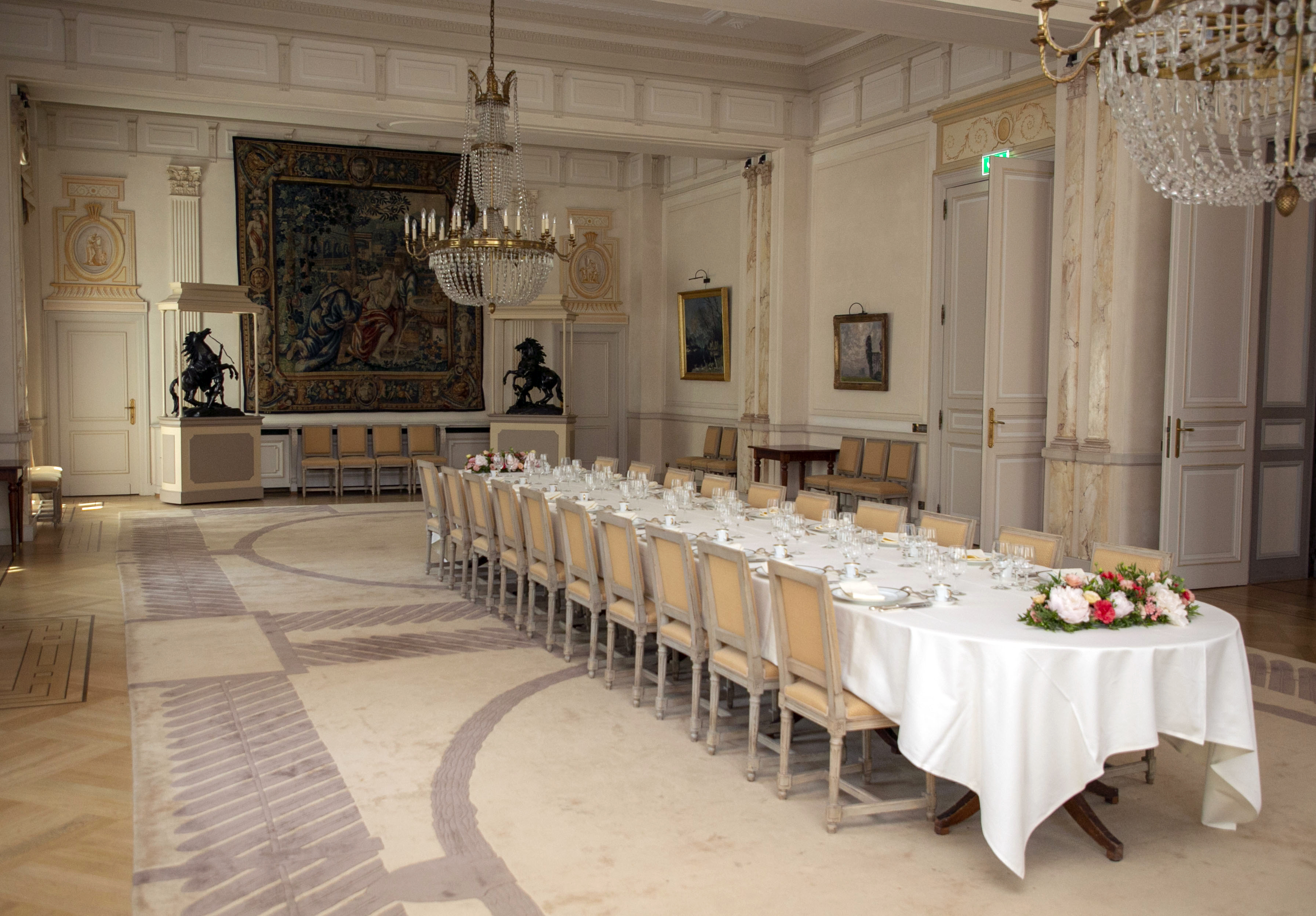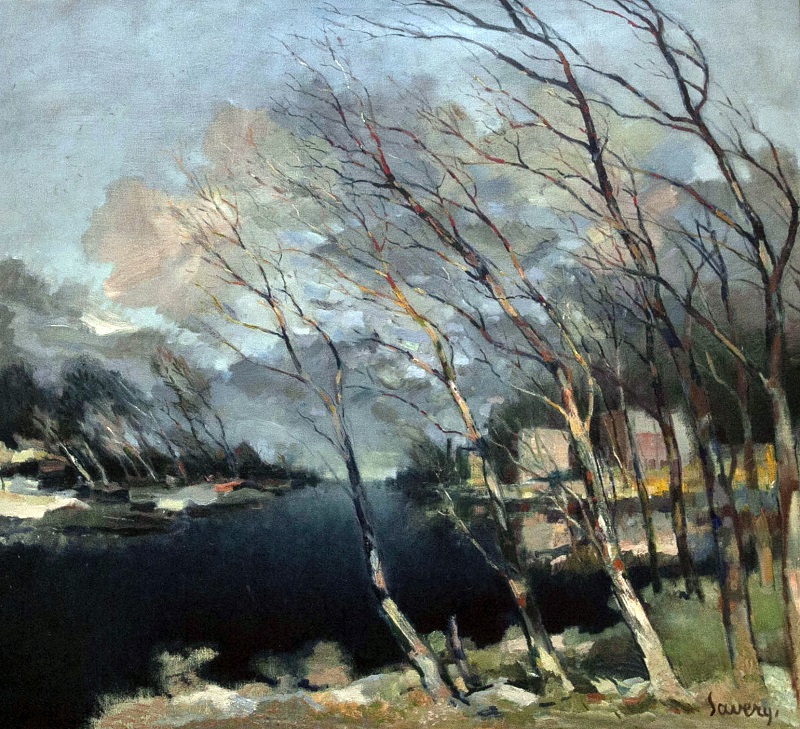
Albert Saverys (1886 - 1964), son of a set designer, took lessons at the drawing school of his native Deinze and learned painting techniques on wood and marble at the École Nicaise of Ghent. He was apprenticed to George Minne and Jean Delvin and was influenced by Emile Claus. He loved the Leie region and painted landscapes, but also fishermen and still lifes.
Saverys' landscapes were very popular with collectors from the 1930s onwards, which almost forced him to paint Leie faces over and over again. The expressive power of his impulsive painting technique is related to artists such as Albert Servaes and Constant Permeke, who also used the landscape to express their own spiritual state.
The Senate has always focused on art as a means of decorating and adorning its rooms and halls in the Palace of the Nation. This has led to the interesting collection that can be admired in the building today.
The book L'art au Sénat – La découverte d'un patrimoine / Kunst in de wandelgangen – Het onbekende patrimonium van de Senaat shows a selection of works of art from this rich patrimony that has been built up over more than a century and a half. The collection is very diverse and contains a wide range of works from different art movements and eras.
The art critic Joost De Geest explained it using the following words in the introduction to that book:
'Those who only expect official art are somewhat deceived. It cannot be said that Belgian content, call it
belgitude, was the sole purchase criterion. Attempts have been made to follow developments in the field
of art. This took place within the boundaries of what one might call a 'corporate' collection. The space
available and care for the image have always been important factors in the purchasing policy. The collection
thus reflects the evolution of the tastes of the representatives of the Nation, who, of course, had to give
their approval. It cannot be said that one movement or artist dominates the collection.'
© Belgian Senate

